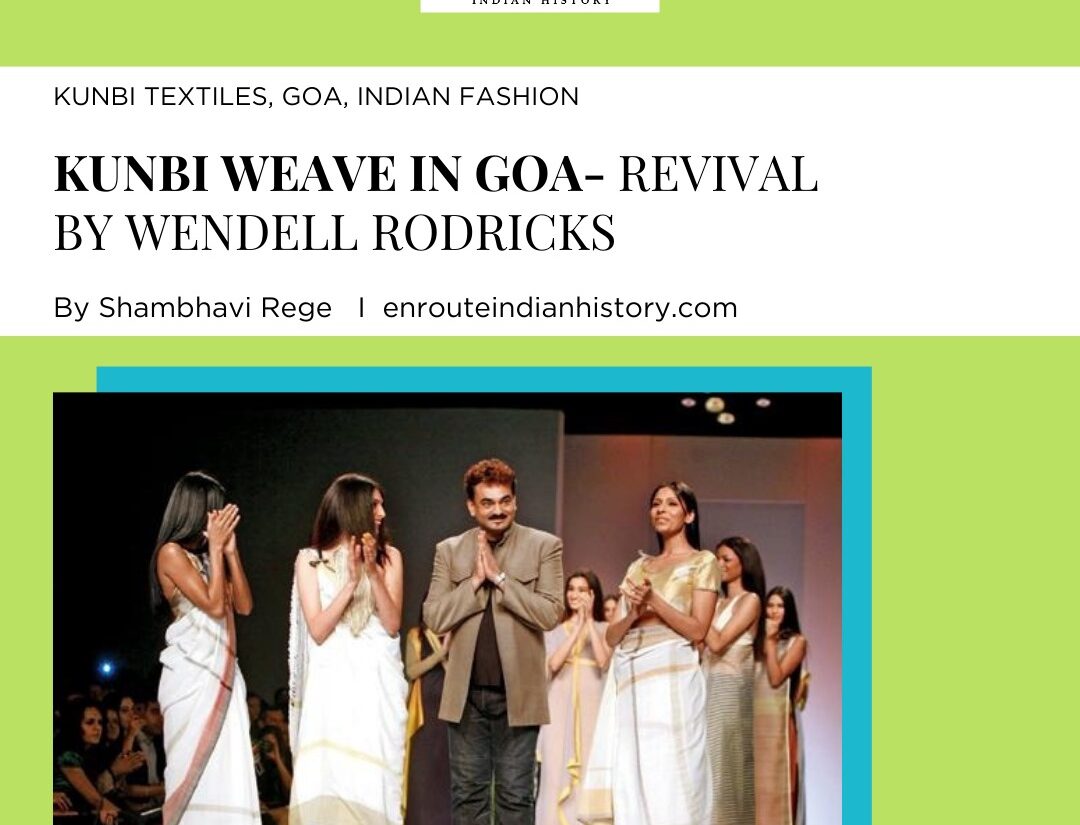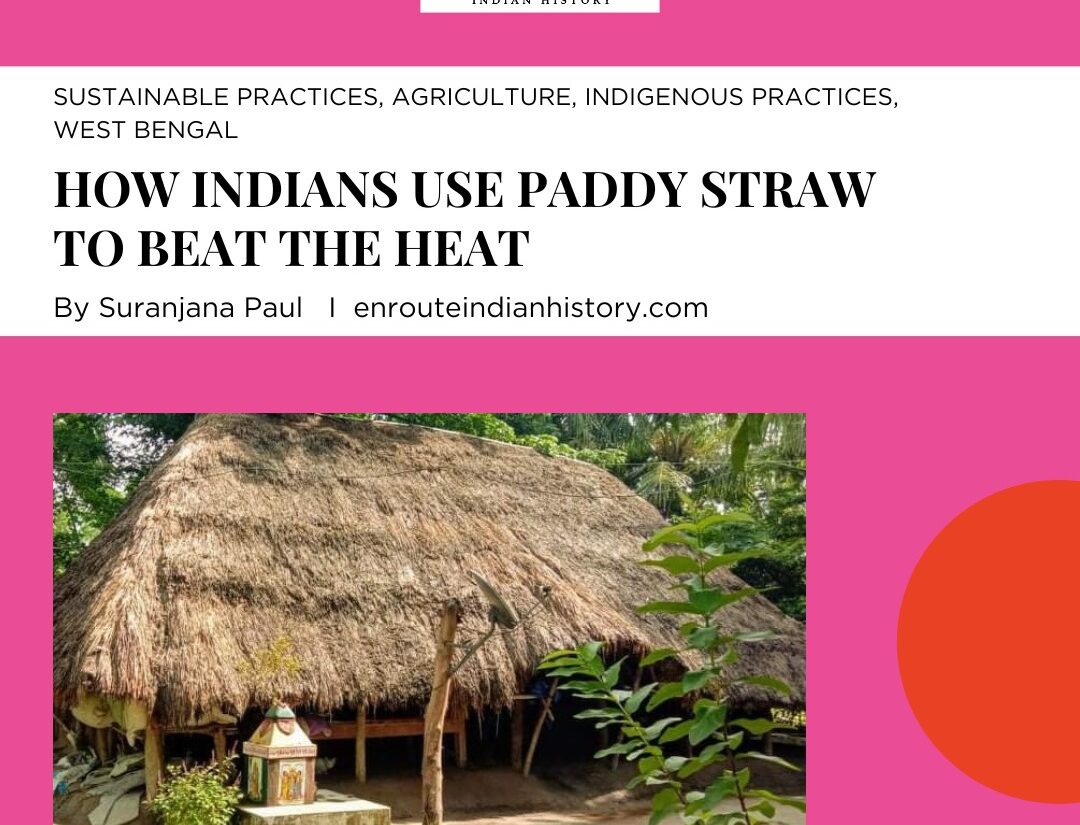
Food, shelter and clothing are said to be the three necessities of a man. As food nourishes the body and shelter provides a safe place for man, clothing provides a sense of comfort and protection. Once the necessity is fulfilled, man goes in search of advancement and luxuries. Similarly, the necessity of clothing was fulfilled and then started a never-ending process of creating fashion. Motifs, symbols and different patterns started appearing in Indian fashion scenarios giving a different meaning to the textiles. This evolution of textiles can be seen in every region of India. But certain textiles that were created by the locals and the primary people of the land, evolved in a much slower manner or unfortunately saw the end. One such textile from Goa that was seemingly on the verge of going extinct but was revived with spectacular efforts is Kunbi textiles.

Goa is famous for its scenic beauty.
(Source- Captured by me)
Generally, when people hear about Goa they think of the fun, pomp and glamour of the state.
For the residents, frequent travellers and people native to this place, Goa stands for its natural beauty. The beauty of this place is enhanced in the rainy season when the surroundings are lush green. There is rain, a cold breeze, clouds, and roads with soft mud. This is the time when the roads have a beautiful view. On both sides are coconut trees and paddy fields. In these paddy fields, one can see workers tilling the land, putting the paddy saplings, and tending to the field, with a locally made raincoat over them. These people stand knee-deep in the fields, full of mud and water, and toil hard.
Kunbis in Goa
These people are the famous Kunbi people from Goa. This community is known for their hard-working nature. Kunbis are the oldest indigenous tribes from Goa. The word itself is derived from two words- kun and bi. Kun refers to people whereas bi is a seed word. It refers to people who germinate seeds, from one seed. The term Kunbi is associated with people of the soil, the ones who work in fields. They can be seen in the fields, toiling hard in the paddy fields, no matter how harsh the rains are or how difficult the weather is. They are truly the ones closely associated with the land.

The Kunbi saree which was perfect for the farming community, being made of cotton and durable.
(Source – Gaatha.org)
Tribal community and Kunbi textile
Like every other tribal community in India, Kunbis from Goa have a past that goes back to centuries. The Kols were one of the earliest settlers in the Goan region. They were a farming community. According to Mr. Vinayak Khedekar, author of ‘Kunbi’, the cultivation of lands was carried out by people termed as kulambis/Kunbis. They took farming, and fishing and took part in the production of hand-woven cloth. The famous Kunbi textile, commonly seen in the form of sarees and kashtas (loincloths) belonged to these people in every sense as it suited their requirements well. Women draped the Kunbi textile sarees around their body, with a knot near the neck or one shoulder, the length of the sarees was up to knee level which was suitable for their work in the paddy fields where they stood in knee-length waters.

A woman in traditional kunbi weave
(Source – Fabloom stories,2020)
The Kunbi textile was used by these people in various forms such as sarees for women, dhotis and kashtas for men, skirts for little girls, and valos (hand towels) and towels. It was used as bed sheets too. This chequered red and white textile became a part of the identity of the Kunbis. The textile from Goa often was a node to the changing seasons and steps of life. The red colour meant vibrancy and fertility whereas the yellow colour was sometimes associated with the widows. Maroon symbolised youth and purple was associated with old age. Black, often was symbolised to death. In all this, the red and white cotton textile with its unique simplicity and chequered pattern, became associated with the farming community.

Kunbi textiles
(Source – Gaatha.org)
It was only with the arrival of the Portuguese in Goa that things started to change. For example, the Kunbi women often draped the sarees without a blouse. The Portuguese government, passed a decree in 1940 which made it compulsory for the women to wear a blouse or an undergarment below their saree drape. The textile, which was one of the few textiles that wholly belonged to Goa, was discarded. The Portuguese wanted to push their European textiles and garments into the regions and hence they tried to erase this part of Goa’s textile identity.
The Portuguese were largely successful, as the Kunbi textile almost disappeared from the scene with their arrival. It was only after the Portuguese left Goa that efforts were made to revive this textile. It took efforts from many sections of society and decades of research to bring back this forgotten textile. Dr. Rohit Phalgaonkar and Mr. Vinayak Khedekar are two scholars and art historians who put in years of research and study to bring back the Kunbi textile. With their efforts, the art and cultural communities of the state started focusing on this textile. Though Portuguese rule had almost ended the beautiful tribal textile legacy of Goa, this legacy was revived on an international platform by one of Goa’s sons, the celebrated fashion designer Wendell Rodricks.
Revival of the Kunbi textile by Wendell Rodricks
A Padma Shri awardee, Wendell Rodricks is a name with international fame associated with it. Born in Mumbai and native to Goa, Wendell Rodricks shifted to the USA and then to France in pursuit of his career in fashion design. Travelling through places abroad and hosting shows, he gained recognition as a celebrated designer in India as well as abroad. But the calling of his native land was strong and he soon shifted to Goa. His first collection from Goa is what made him the guru of minimalism. At a time when Indian fashion didn’t even know the terms such as resort wear and sustainable, eco-friendly clothes, he brought them on the stage.

Wendell Rodricks, a celebrated fashion designer and also a writer.
(Source – Melting Pot, 2012)
When he ventured into the fashion world, the Indian fashion industry was stuck in glamour, shine and extravagance. The minimal yet pleasing designs of Wendell Rodricks were a cool sea breeze during the hot summer afternoons. He brought the essence of Goa into the clothes he designed. It was when he was in the process of researching for his book, Moda Goa- History and Style, that he came across the vanishing Kunbi textile. He knew that its revival was necessary. He undertook the project for the revival of this textile.
After years of research, In 2010, the Kunbi tribe collection was unveiled which saw the stunning Lisa Ray walk the ramp in clothes from the Kunbi textiles. There was a certain break from the old and the colour palette was changed. But the Kunbi textile gained the attention it deserved. Dhotis, sarees, scarves, dresses, stoles and even kaftans were made from the Kunbi textiles. Summer dresses were also made from this textile. It was the meeting of the old traditional textiles with modern silhouettes. The symbol of Goan heritage was researched by Wendell Rodricks and two other people helped him, one of them a student of design and the other, an old weaver. Wendell, the true son of Goa, termed the Kunbi textile as weightless as the sea breeze of Goa. Some of the earliest praises showered on this revived textile were by Sonia Gandhi, Pratibha Patil and Sheila Dixit.

The Kunbi textile collection by Wendell Rodricks
(Source- Mid Day, 20 February, 2020)
In the process of researching for his book, he uncovered a textile that was quietly being buried under the dust and took it to an international platform. It took him years of research and weaving processes to bring the textile back. The Kunbi textile that was gradually becoming extinct gained another saviour and it was perfect in the sense that it would happen at the hands of a person who loved Goa and advocated for its culture, cuisine and even environment. Today the Kunbi textile garments are available in Goan markets and also on consumer websites, prominently seen in collections at Wendell Rodricks stores and Gaatha shops.
Though the tribal communities in India played an important role in the social fabric of the country, their role is hardly ever brought to light. The unique textiles and designs that are a treasure of the tribal communities are often shunned by the elite classes. Slowly such textiles and their weaving processes go extinct. Only when such textiles come into museums and adorn the aesthetic galleries do the classes take notice and rue about its extinction. The Kunbi textiles from Goa would have seen a similar fate had it not been for the efforts of the weavers, art historians from the land and Wendell Rodricks. Though their efforts saved it from being locked away in galleries inside glass cases, the pre-Portuguese Kunbi weaving and the post-Portuguese textile are not completely unchanged. Today, the textile is available in markets, sold as an elite-class garment, but has lost touch with its roots, the people of the soil to whom it belongs.
References
V.R.Mitragori. A Socio-Cultural History of Goa from the Bhojas to the Vijayanagara. Goa University, 1992.
https://www.vogue.in/content/wendell-rodricks-receives-state-nod
https://www.indiainch.org/craft/the-kunbu-saris-of-goa/
https://gaatha.org/Craft-of-India/kunbi-saree-weaving-goa/
https://www.livemint.com/Leisure/PO8oXYSI2lJUK1WuLVFmhL/The-Kunbis-niche-revival.html
- May 15, 2024
- 6 Min Read























